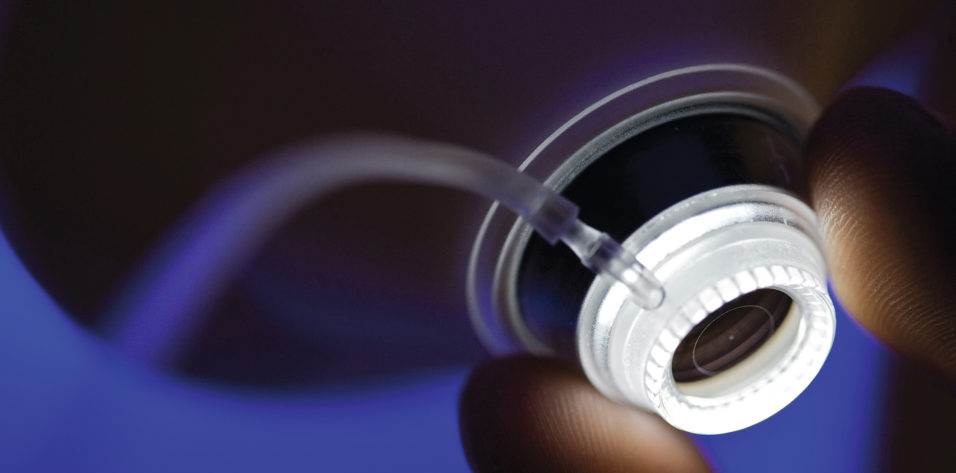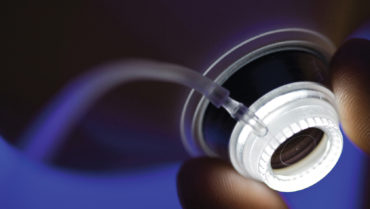
It was a little more than 1 year ago that Kugler Vision purchased the VisuMax femtosecond laser system (ZEISS). At the time, in September 2016, we owned the WaveLight FS200 (Alcon), which is a great laser, and we were getting excellent results. Our interest in purchasing a second platform was so that we had redundancy and also so that we could take advantage of the unique features of different platforms.
Looking back, purchasing the VisuMax was a wise investment in our quest to maximize patient satisfaction and to grow our overall refractive surgery volume. Herein I review the three main reasons why I believe that the VisuMax femtosecond laser system is worth the investment.
THREE REASONS
Reason No. 1: The VisuMax provides a unique patient experience. I have used most of the femtosecond lasers that are available today, whether in my own practice or during my fellowship training, and I feel that the VisuMax provides the most comfortable patient experience. This is mainly because the docking interface to the eye (Figure 1) is so soft—meaning the cornea is not applanated nearly as much as with some other platforms—that patients barely feel it.

Figure 1. A patient is docked under the VisuMax femtosecond laser.
It has been described to me that the pressure felt by the patient during docking the interface of the VisuMax laser feels roughly the same as the amount of pressure that is applied with Goldmann applanation tonometry. From the patient’s perspective, this translates to a rather comfortable docking process. I had heard from colleagues and patients who have been treated with the VisuMax that it is a comfortable laser, but I did not realize just how much more comfortable it is for patients than other laser platforms. This aspect alone has enhanced the LASIK experience for patients, and it has been a big benefit of owning the VisuMax.
The downside to the soft dock is that suction break can be more common if the patient is not still during treatment. However, with what we call verbal anesthesia—coaching patients through it and asking them to focus on the fixation light and not move their eye—suction breaks have been a rare occurrence. The other good news is, if a suction break does occur, the software is very user friendly and guides the surgeon through completing the treatment. It is better at that than any of the other lasers I have used.
Reason No. 2: The VisuMax makes beautiful LASIK flaps. Something that goes hand-in-hand with the unique patient experience is the fact that the laser makes beautiful LASIK flaps. When we purchased the VisuMax, we exclusively used it as a flap maker for 6 months; once SMILE was approved by the FDA, we then started performing that procedure as well. What I quickly found out in those first 6 months is that the VisuMax offers an adequate range of flap diameters and that patients are likely to have a positive surgical experience. This can translate into more word-of-mouth referrals because of the excellent patient experience. The bottom line is that having a gentler laser matters to our patients.
Something else relevant is that I have found the VisuMax is the laser most likely to achieve a good docking in patients who have narrow lid fissures. If a patient has trouble opening his or her eye, or if he or she has a tight lid fissure or a prominent brow, I immediately prefer the VisuMax.
Reason No. 3: SMILE is an exciting new refractive surgery procedure. One of the main reasons that we chose the VisuMax is that we knew small incision lenticule extraction (SMILE) would eventually be approved by the FDA, and we were very interested in getting involved with the procedure.
We have now been offering SMILE since Spring 2017, and it has been a nice addition to the armamentarium of procedures we can offer our patients. SMILE has a prominent place in refractive surgery treatments. I particularly like it for people who have dry, irritated eyes and I am concerned that a lot of disruption to their surface might be uncomfortable for them. In terms of the healing process, SMILE tends to be a little more gentle to the ocular surface than other procedures that we can offer patients.
I also like SMILE for people who play contact sports or may sustain repeated trauma to their eyes, like boxers or mixed martial arts fighters. In situations like these, in the past I might have chosen PRK; now, I am more likely to choose SMILE. There are also patients who have already decided on their own that they do not want to undergo a flap-based procedure. They have done their research, and, in their opinion, they do not want a flap. SMILE appeals to these patients, because there is no flap and they do not have to go through the PRK healing process.
The other thing I like about SMILE is that it is performed with one laser system. I think, over time, that is going to prove to be a nice advantage compared with LASIK. The excimer laser can be difficult to maintain; the gas exchange, the calibrations, and the nomograms that are associated with it can be daunting. Compared with the excimer laser, the femtosecond laser is easier to maintain, it does not need as frequent calibration, and it allows the entire procedure to be performed under the same system.
I think that once the astigmatism indication is approved by the FDA, we will see an upsurge in the number of SMILE procedures being performed; it will really open the door to SMILE, as more patients will be eligible for the procedure. With that said, we have a way to go until SMILE achieves the precision and reproducibility that we are accustomed to with modern LASIK.
CONCLUSION
It is an exciting time in ophthalmology. With a variety of new technologies and procedures at our disposal, we should not be marketing one against another. If the guy across town is doing SMILE but you are not, that is okay. Our message must be cohesive: “We have lots of ways to fix your vision so that you can see the best you can possibly see.” We need to not get caught up in different technologies being better than others.
We need to take advantage of the excitement in refractive surgery and concentrate on the fact that we have many different ways to help people achieve refractive correction. I am excited by the prospects of the VisuMax femtosecond laser in this journey, but I also recognize that other technologies and tools are just as valuable to my practice and, ultimately, to the happiness of my patients.


